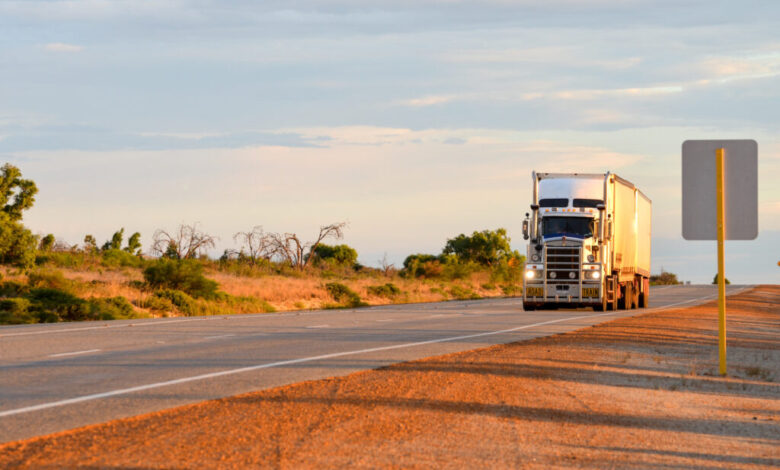Mastering Heavy Haulage: The Backbone of Australia’s Mining Industry

Australia’s economy significantly benefits from its mining industry, a sector that demands rigorous operational capabilities and logistical expertise. Central to the success of this industry is the crucial role played by heavy haulage in Australia. Ensuring that mining operations remain efficient and cost-effective, heavy haulage providers operate within a framework of stringent regulatory requirements and immense logistical challenges, providing an essential service that facilitates nearly every aspect of mining activities. This article delves into the intricacies of heavy haulage and explores how it serves as the backbone of Australia’s mining industry.
Understanding Heavy Haulage
The term ‘heavy haulage’ refers to the transportation of oversized and overweight loads that cannot be divided into smaller segments. It involves the movement of large mining equipment such as excavators, dump trucks, and drilling machines, which are critical to the operations of a mine. To effectively handle such significant payloads, specialised vehicles and equipment are required, including platforms, trailers, and even custom-designed transport solutions that ensure the safe and efficient transit of these substantial investments.
Additionally, successful heavy haul transport depends on meticulous planning and route assessments. Road infrastructure, traffic regulations, and environmental factors must all be taken into consideration to prevent any disruptions or incidents during transportation. This is where the experience and expertise of heavy haulage providers become indispensable for the mining industry.
The Significance of Heavy Haulage in Mining
Mining is an industry deeply entrenched in the fabric of the Australian economy. It is responsible for the extraction of various minerals, metals, and resources that are integral to a plethora of other industries, both domestically and internationally. The logistical endeavours entailed in mining operations, particularly in moving hefty mining equipment, cannot be understated. Without efficient heavy haulage solutions, the sector would face immense challenges in establishing and maintaining productive mining sites.
One of the vital aspects of heavy haulage in the mining sector is the need for timely delivery of equipment to prevent operational delays. Any hold-ups can lead to significant financial setbacks and disrupt the supply of raw materials. A heavy haulage provider must therefore be exceptionally reliable and capable of meeting strict deadlines while complying with all safety regulations and maintaining high operational standards.
Specialised Needs for Mining Equipment Transport
Transporting mining equipment demands an acute recognition of the intricacies involved. Oversized loads require special transit considerations such as permits, pilot vehicles, and police escorts. Each Australian state and territory may have different regulations, and a deep understanding of these laws is crucial for compliance and transportation efficiency.
Beyond regulatory compliance, the physical demands of moving mining equipment necessitate vehicles of immense strength and resilience. Trailers and transporters must be robust enough to withstand not only the weight of the cargo but also the rigours of Australian terrain and weather conditions.
Another factor to consider is the role of technology. Advancements in GPS tracking, route planning software, and load securing technology further contribute to the safe and efficient transport of mining equipment. It’s also worth noting that innovative approaches such as modularisation can simplify the transport process, whereby equipment is transported in parts and assembled on-site. This strategy requires insightful coordination and technical acumen from the heavy haulage service provider.
Environmental and Community Implications
Heavy haulage is not only about getting from point A to B but also doing so in a manner that’s mindful of environmental and community implications. The mining industry frequently faces scrutiny for its environmental footprint, which extends to its transport practices. The efficient use of fuel, reduction of emissions, and minimisation of disturbances to local communities and the natural landscape are all important considerations.
A responsible heavy haulage company would foster a culture that prioritises sustainable practices and seeks to continuously improve its environmental performance. This can include choosing the best routes to reduce fuel consumption or investing in cleaner-burning engines. Community engagement is equally essential, using clear communication to reduce the potential disruption caused by the transportation of large mining equipment.
The Future of Heavy Haulage in Mining
Looking ahead, the increasingly complex demands of the mining industry will continue to shape the evolution of heavy haulage. Innovations such as autonomous vehicles, advanced analytics for logistics management, and even drone technology present new opportunities and challenges for heavy haulage providers. Nevertheless, the fundamental need for transporting mining equipment safely, effectively, and within compliance will remain unchanged.
Ultimately, the relationship between the mining industry and heavy haulage companies is one of interdependence. The ongoing prosperity and development of Australia’s mining industry are inexorably linked to the continuous improvement and mastery of heavy haulage logistics.
In conclusion, the art of mastering heavy haulage is indeed the backbone of Australia’s mining industry. The sector relies on sophisticated transport systems and the expertise of specialised service providers to remain at the forefront of global mining operations. As the industry grows and evolves, the partnership between miners and heavy haulage experts must strengthen in tandem to ensure that Australia retains its leadership position in the mining world. The future of mining rests upon the wheels of expertly managed heavy haulage – a testament to the undeniable significance of these transport giants in the pulsating heart of Australia’s thriving mining sector.




